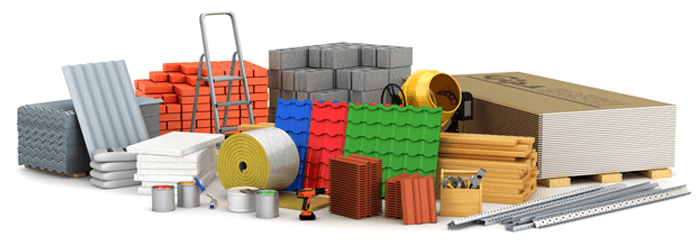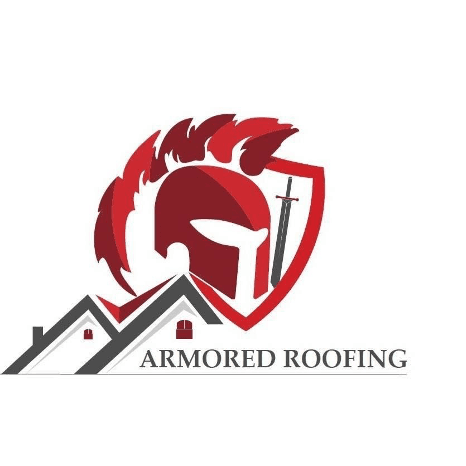The sheer number of different building materials is staggering. There are millions of different products ranging from anchor bolts to Z-bar flashing. Because we can’t cover them all here, let’s focus on obtaining them.
Plan Before Purchasing
Start by planning your purchase. Decisions about new, used, and recycled products (like you get at the Habitat for Humanity Restore) should be made first to help focus your shopping efforts. There are many new and exciting products on the market. Before you buy something shiny and new, do some research. What is the demand for the product as well as the availability? What is the warranty, and what are the limitations?
Make Your Supply List
Once you have the plans together for your project, it is time to make your supply list. Decide what the finish materials will be and plan out what supporting materials are needed. Supporting materials are items needed to put the finish materials on or support the materials needed to finish.

Now it’s time to quantify your materials. Ask yourself “how much of this material do I need?”
This process begins with what contractors call a “materials take-off list”. This is where you list all the 2×6 plywood, gypsum wallboard sheets, and everything needed for the project. This detailed planning will help you stay on budget and keep you from running to the supplier several times.
Estimate Quantity
Once you have created your list, you will need to estimate the number or quantity of items needed. Estimating the quantity needed is not an exact science. The majority of materials you will need come in prepackaged specific quantities and/or sizes. Materials like paints and other liquid products are sold by the gallon. Knowing the square foot requirement for coverage of your project, you can estimate the number of gallons you will need. The amount you calculate will likely not fit neatly into a product’s standard delivery quantity. For example, let’s say you have 235 square feet to cover with primer, and your research shows that a gallon of primer covers between 200 to 300 square feet. Well, you can’t buy part of a gallon, so in your materials take-off list “quantity needed” column, indicate one gallon of primer. That is why it is called estimating.
Other products come in specific sizes. Dimensional lumber (2x’s, 3x’s, 4x’s, etc.) comes in prescribed lengths, usually 8 feet, 10 feet, and 12 feet long. Some precut stud lengths are also available. Sheathing, subfloor products, and wallboard products are typically sold in pre-sized sheets that are four feet by eight feet, 10 feet, and 12 feet in length. Using that same 235 square feet and calculating a 4’ x 8’ sheet at 32 square feet per sheet yields 7.34 sheets. Because you can’t buy .35 of a sheet, your materials will have eight sheets in the quantity column. Estimating is a lot of work, but very necessary for ending up with a great project. Do not skip the details.
Materials Cost
 The materials take-off list has two components: actual size or area needed, and realistic quantity to purchase. The next two steps are determining the cost per unit (such as dollars per gallon or dollars per sheet) and multiplying the unit cost by the quantity you estimated needed to determine each material’s total costs. Get accurate costs from real suppliers, and include a little extra to be sure you won’t have to run back out to the supplier. A ten percent surplus is good to add to estimates. You should now compare the total material costs to the budget and determine if any changes need to be made.
The materials take-off list has two components: actual size or area needed, and realistic quantity to purchase. The next two steps are determining the cost per unit (such as dollars per gallon or dollars per sheet) and multiplying the unit cost by the quantity you estimated needed to determine each material’s total costs. Get accurate costs from real suppliers, and include a little extra to be sure you won’t have to run back out to the supplier. A ten percent surplus is good to add to estimates. You should now compare the total material costs to the budget and determine if any changes need to be made.
With fluctuating materials costs, getting current and actual costs is important in today’s market. The factors that influence pricing include supply chain issues (availability), transportation (cost of getting it where you want it), production issues (can the manufacturer keep up with demand in today’s labor market), and the cost of the raw materials needed. Volatility is the best way to describe the market right now. According to Deep Dive, a construction industry news outlet, the cost year over year for products made from plastics has jumped by 27%, gypsum products (drywall) by 18.9%, and diesel fuel (how it all gets here) by 111.1%. Call your local suppliers, starting with the Rosie on the House Certified Partner list.
Let us know about your experiences, both successes, and obstacles. Drop us an email at info@rosieonthehouse.com.
###
Home Maintenance To-Do | #BuildingMaterials
PODCAST
We answer homeowner questions on a noisy mini split, cleaning a glass shower door, and laminate floor moisture damage. Then a homeowner received 2 bids from solar salespeople on installing a system that are not even close to compatible. That set off a warning you need to know if a solar salesperson knocks on your door and what you should do about it.
Podcast Archive With Expanded Content and Resources
PHOTO CREDIT
- Shutterstock
















